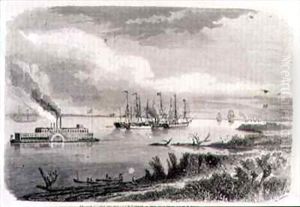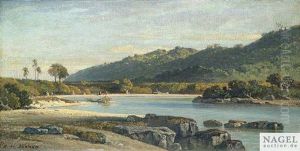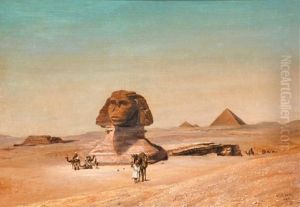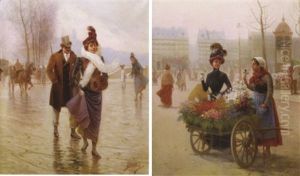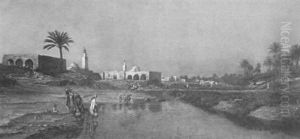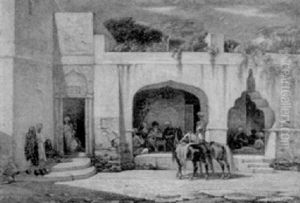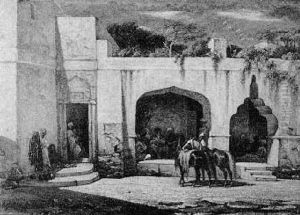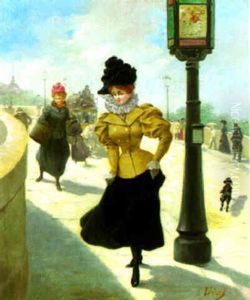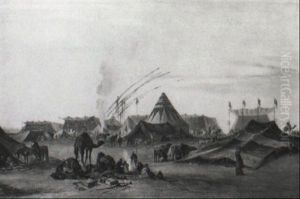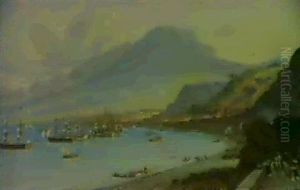Evremond de Berard Paintings
Evremond de Bérard was a French artist known for his contributions to the world of painting and illustration during the 19th century. Born in 1824, de Bérard's life spanned a period of significant social, political, and artistic changes in France, from the aftermath of the Napoleonic Wars through the revolutions of 1848, the Second Empire, and into the beginnings of the Third Republic. Despite the turbulent times, de Bérard managed to carve out a niche for himself in the French art scene, which was increasingly becoming open to new ideas and styles as the century progressed.
De Bérard was particularly noted for his landscapes and marine scenes, capturing the essence of the French countryside, coast, and maritime life with a keen eye for detail and atmosphere. His work reflects the transition from the classical and romantic styles of the early 19th century to the more impressionistic approach that began to emerge in the latter half of the century. Although not as widely recognized as some of his contemporaries like Claude Monet or Edgar Degas, de Bérard's contributions to French art were nonetheless significant, particularly in the realm of illustration.
Throughout his career, Evremond de Bérard also engaged in illustration, contributing to various publications of the time. His illustrations often accompanied texts, bringing stories and poems to life with his detailed and expressive drawings. This work helped to popularize illustrated books and periodicals during the 19th century, making literature more accessible and appealing to a broader audience.
De Bérard's legacy, though not as celebrated as that of some of his peers, remains an important part of the study of 19th-century French art. His paintings and illustrations capture the spirit of an era that was marked by great change and innovation. Evremond de Bérard died in 1899, leaving behind a body of work that continues to be appreciated by art historians and collectors alike. His contributions to the fields of painting and illustration during a pivotal period in French art history reflect a talent that was both of its time and timeless.
